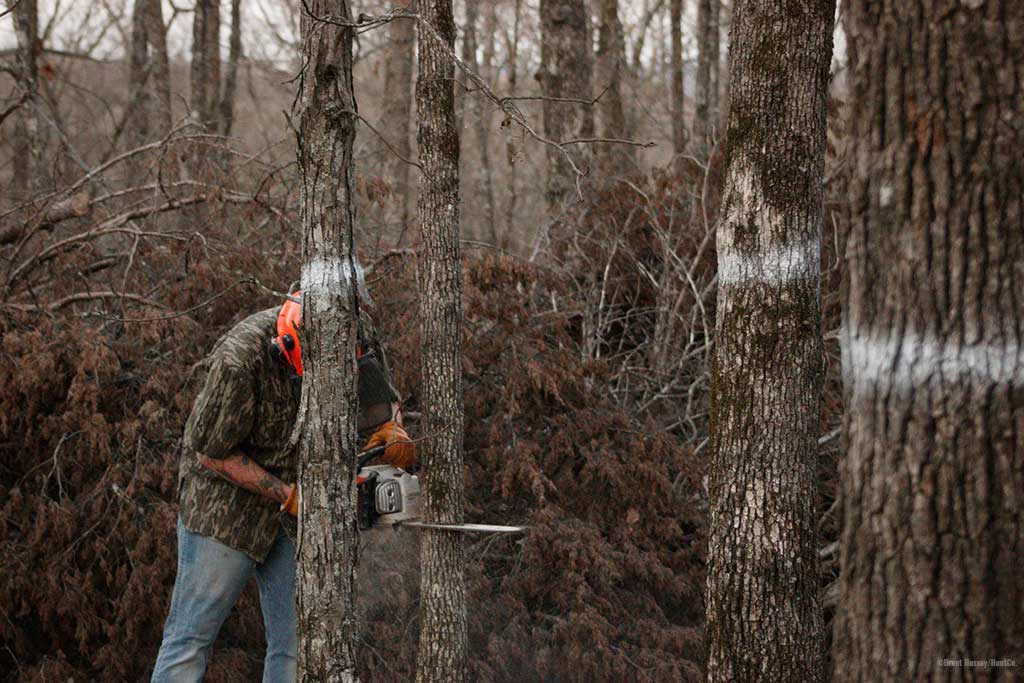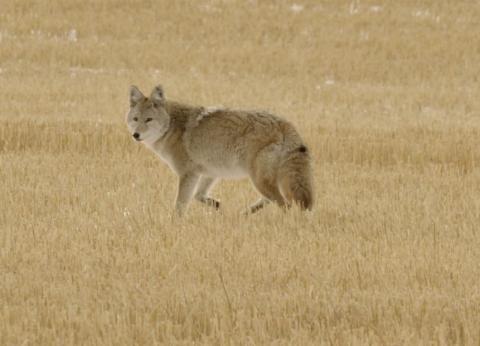Dana Rogers

One of the simplest ways to create edge habitat is to cut the mature trees where forest meets field. Doing so allows sunlight to reach the ground, which encourages an entirely new plant community. Native shrubs, vines and woody plants will spring up to create fantastic edge habitat. You don’t even have to remove the fallen trees; in fact, with “hinge-cutting” that’s the whole idea. You leave the top connected to the roots so it continues to grow. It creates new cover that will eventually turn into dense brush piles.
Thinning or hinging trees along the edge of a timber tract or along roads or fields can also create transition zones between different habitat types. Deer and other wildlife love these areas because they often provide a diversity of high quality foods.
Trees more than 12 to 15 feet high that are along the field can be dropped if they don’t hold food, timber or stand site value. You can pile them up, or hinge cut them if they are the right diameter (not too small or large). If you want to ensure a stump kill, I would suggest spraying, with an approved herbicide to prolong the benefits. The overall objective of edge feathering is to remove the canopy cover and have sunlight reach the bare soil. This will initiate the growth of the shrubby cover, forbs and woody browse. While it may look like a mess, it provides immediate habitat and browse.
Most people who install edge feathering choose to do so with a chainsaw. Remember to wear proper safety gear such as a gloves, ear protection and eye protection. Keep your sharpener, oil and gas handy as you will need them on larger projects. Hinge-cutting is all the rage these days and it definitely has some merit. I have just a very few species of mature trees so most of my hinge-cut options are elm, hackberry and ash. I like to hinge about 2 feet off the ground and keep as much of the base intact as possible, bending, pushing or pulling the top down. Try to do several in one spot to create a cluster with many falling together. This provides lots of great browse as well as low cover to block wind, and create thermal cover and bedding areas.





























